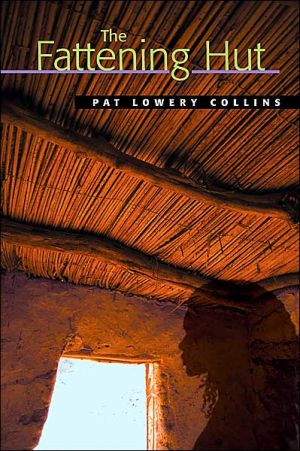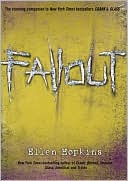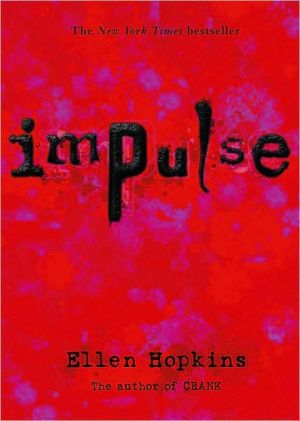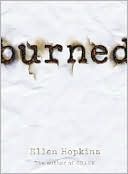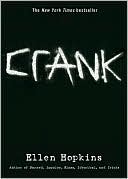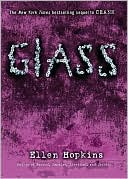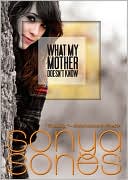Fattening Hut
Helen doesn’t want to stay in the fattening hut. She’s told her mother that she’s too young, not ready for it. Why must she marry so soon—and gorge on rich meals for months, until she’s heavy and round, like a good bride? Like her mother and sister before her, like all the women of her tribe.\ When she learns the terrible secret the fattening hut harbors, Helen becomes even more defiant and confused. Lonely, scared, and feeling confined by her family, culture, and tradition, she fights for a...
Search in google:
Helen doesn’t want to stay in the fattening hut. She’s told her mother that she’s too young, not ready for it. Why must she marry so soon? She doesn’t want to gorge on rich meals for months—until she is round and heavy, like a good bride should be. Just like her mother and sister before her, just like all the women of her tribe. When she finds out the terrible secret the fattening hut harbors, she becomes even more confused and defiant. Lonely, scared, and feeling hemmed in by family, by culture, and by tradition, Helen fights for the chance to be educated, young, and free.Publishers WeeklyCollins (Signs and Wonders) hauntingly explores the ramifications of a disturbing rite of passage in an island tribal culture. The novel, told in free verse, opens as 14-year-old narrator Helen sits in the "fattening hut," where girls go in near solitude to grow rotund before they marry, and where a secret ritual (female genital mutilation) is performed. But Helen's Aunt Margaret, who taught Helen to read, smuggles in books that the woman received from long-ago British visitors to their island. Into one of the books, Aunt Margaret tucks a piece she wrote, "An Island Story," a brief history of their island's practices, which mentions "the fattening and ceremonial cutting of young women." This is as explicit as Collins gets about the procedure (until an afterword), but it is enough to plant a seed in Helen's mind; the author establishes Helen's intelligence and intuition early on, in lyrical language ("The women are all telling me/ with words and without sound/ that I have no power even over/ what I think of as myself"). The heroine also proves her resourcefulness when, after escaping from the hut, she travels far from her family's settlement. Details about the lush land spring to life, as Helen seeks refuge in a tamarind tree and encounters anteaters, cayawolves and other exotic (to readers) wildlife. Collins presents Helen with choices, each of which means a painful sacrifice. An effective portrayal of a girl on the brink of adulthood, set within the framework of a suspenseful adventure story. Ages 12-up. (Sept.) Copyright 2003 Reed Business Information.
\ Publishers WeeklyCollins (Signs and Wonders) hauntingly explores the ramifications of a disturbing rite of passage in an island tribal culture. The novel, told in free verse, opens as 14-year-old narrator Helen sits in the "fattening hut," where girls go in near solitude to grow rotund before they marry, and where a secret ritual (female genital mutilation) is performed. But Helen's Aunt Margaret, who taught Helen to read, smuggles in books that the woman received from long-ago British visitors to their island. Into one of the books, Aunt Margaret tucks a piece she wrote, "An Island Story," a brief history of their island's practices, which mentions "the fattening and ceremonial cutting of young women." This is as explicit as Collins gets about the procedure (until an afterword), but it is enough to plant a seed in Helen's mind; the author establishes Helen's intelligence and intuition early on, in lyrical language ("The women are all telling me/ with words and without sound/ that I have no power even over/ what I think of as myself"). The heroine also proves her resourcefulness when, after escaping from the hut, she travels far from her family's settlement. Details about the lush land spring to life, as Helen seeks refuge in a tamarind tree and encounters anteaters, cayawolves and other exotic (to readers) wildlife. Collins presents Helen with choices, each of which means a painful sacrifice. An effective portrayal of a girl on the brink of adulthood, set within the framework of a suspenseful adventure story. Ages 12-up. (Sept.) Copyright 2003 Reed Business Information.\ \ \ \ \ VOYASet in the early twentieth century on an isolated and primitive tropical island, this story is of Helen, who refuses to accept her heavily patriarchal tribe's insistence on fattening young girls before marriage and then maiming them through female circumcision. Although isolated, the island has had occasional western visitors, and several women of the tribe have adopted English names to the general disapproval of the majority. A few women have even learned in secret to read English. When it comes time for Helen to enter the fattening hut, she refuses to eat, and with the help of her outcast Aunt Margaret and a boy named Ashani, both of whom disapprove of the island's gender practices, she escapes the hut and goes into hiding. Her refusal to participate in the rites seems doomed to failure, however, because the island is too small for her to hide for long. At the story's end, against all hope, a possible escape route presents itself. Collins states in an afterword that although both compulsory fattening and mutilation of teenaged girls are common throughout Africa and in other parts of the world, she intentionally chose to set her tale in a "mythic" environment because she did not know enough about any specific African culture to do it justice. The book is beautifully written in sometimes lush free verse, and although the subject matter is dealt with forthrightly, the details are left vague enough to avoid giving undue offense. This exquisite story tactfully portrays a very grim subject. VOYA CODES: 5Q 3P J S (Hard to imagine it being any better written; Will appeal with pushing; Junior High, defined as grades 7 to 9; Senior High, defined as grades 10 to 12). 2003, Houghton Mifflin,186p., $15. Ages 12 to 18. \ —Michael Levy\ \ \ From The CriticsIn the author's notes at the end of The Fattening Hut, Pat Lowery Collins states that she hoped the book will "resonate throughout the human community" (p.186). I would say that she succeeded with her quest. Helen is a 14-year-old native girl of a mythical island now ready to spend time in the fattening hut. Girls are isolated in the hut for fattening before marriage, or in the case of Helen's sister Miduna, while nursing a baby. It is in this hut that the older women will come one night to perform the ritual ceremony of the cutting, female circumcision. This is a powerful tale of adolescent longings, insecurities, and desire for a better life. Hard to imagine, in our culture of thinness, a book about a culture that reveres obesity would speak so strongly. However, this is a book about self-image, self-fulfillment, andself-accomplishment, all concepts with which adolescents struggle. 2003, Houghton Mifflin Co, 186 pp., Ages young adult. \ —Freida Golden\ \ \ \ \ Children's LiteratureHelen must stay in the sacred fattening hut until she is plump and her belly rests upon her thighs like those of her older sister, Miduna. The male-dominated culture dictates rotund beauty. Although only fourteen-years old, thin Helen must be made acceptable before she is married off to Esenu, some sixteen years her senior. The thought is repulsive. Why can't she stay single like Aunt Margaret? Despite being shunned and ridiculed by the village for her rebellion, Margaret controls her own destiny. Helen cannot eat. The food rises like bile in her throat for while she does not understand all that must occur to her, she knows it will change her life forever. The ceremonial cutting is meant to ensure her purification and faithfulness to Esenu. That is, if she survives. Did not Cousin Ene disappear following her time in the hut? If only she had the courage to escape, to run away across the island with her dearest friend, Ashani. This mythic tale is told in hypnotically poetic fashion. It conjures up vivid images even while bringing uncomfortable understanding of the harsh mutilating practice of female circumcision practiced today. From the opening sentence, "Meduna is clicking like a beetle in her sleep and making little snorts and wheezes that pinch the dark" to the closing portrait of this unnamed island paradise, Pat Lowry Collins spins a beautiful yet painful tale. Social studies and anthropology classes offer ideal forums for cross-cultural discussions generated by this important new book. 2003, Houghton Mifflin Company, Ages 10 to 14. \ — Francine Thomas\ \ \ \ \ KLIATTTo quote the review of the hardcover in KLIATT, September 2003: This story, told as a novel in poetry, is based on the actual customs of some cultures in various parts of the world that have rituals during puberty to fatten girls up to ready them for marriage and childbirth. In this story, Collins also writes about the ghastly ritual of female circumcision, practiced on "millions of girls annually in about thirty countries throughout the world" (from the Author's Note). Collins also says in her note that she at first thought to base this novel on an actual culture but in the end used a mythological culture and place. It could be argued that the impact would have been more powerful if she had not strayed from her original plan. The immediate thought, reading the title, is how ironic that at puberty some girls in some cultures are fattening up while many girls in cultures we know well are obsessed with thinness and suffer from terrible diseases such as anorexia and bulimia—also frequently associated with puberty. For that reason alone, this book holds a fascinating appeal. The narrator is Helen, a girl of 14 who has been taught to read by her aunt, a rebel force in their male-dominated culture and the woman who will prove to be Helen's rescuer. Helen is an active person who has roamed her island in the company of a boy, Ashani, who also becomes part of the rescue operation. But Helen seems to have no power at first to resist the traditions of her people. She must enter the fattening hut, accompanied by her older sister who is married with a nursing baby, and eat and eat until she is given in marriage to the man her parents have chosen for her—an older man with nothing appealingabout him, as far as Helen is concerned. What Helen doesn't know, but learns, is that part of the ritual of the fattening hut is that when she is fat enough, it will be time for the circumcision, a brutal cutting of her genitalia. The details of this circumcision are narrated carefully, with the meaning clear enough but events not graphically depicted—so middle school readers would be able to handle it. As with most YA novels written as poetry, fewer words are used but the impact of each word and the tempo of the narrative drive readers on. An unusual book. KLIATT Codes: JS—Recommended for junior and senior high school students. 2005, Houghton Mifflin, Graphia, 185p., Ages 12 to 18. \ —Claire Rosser\ \ \ \ \ School Library JournalGr 9 Up-As in Signs and Wonders (1999) and Just Imagine (2001, both Houghton), Collins once again deals with teens who are out of sync with their culture or surroundings. In this book, she deals with the weighty issue of female circumcision. At 14, Helen has been promised to Esenu, an "old man" in her opinion, 30 years of age. She needs to gain weight, for what man wants a skinny bride? All of the girls on this fictional island are expected to go into confinement and eat as much as they can. However, the isolation and loss of youthful freedom have taken away Helen's appetite. In addition, she is becoming aware that the fattening hut holds another terrible secret. Helen is known to be willful; she takes after her unmarried Aunt Margaret, who has long been an outcast of the tribe. She has taught her niece to read and has given her ideas about the world beyond their island. Despite dire consequences if caught, she helps Helen to escape. Written as a long, first-person prose poem, the story is well told and compelling. Throughout this short novel, Collins subtly reveals who these people are, their customs, and what awaits Helen if she stays. This is a tough book that expects a lot from its readers. The terrible secret hidden in the hut may be lost on younger teens or less-sophisticated readers. Nevertheless, this is a powerful and unique book.-Roxanne Burg, Orange County Public Library, CA Copyright 2003 Reed Business Information.\ \ \ \ \ Kirkus ReviewsCollins’s novel in free verse doesn’t quite hang together. Helen is coming of age in a fictional island culture (borrowed from Nigerian custom and the British West Indies) where girls are taken to the "fattening hut" before they’re married. There they’re fed rich delicacies for days, until they develop the womanly folds that make them attractive. Helen is nervous about marriage, and her body rebels, growing steadily thinner (a psychosomatic reaction? Collins doesn’t explain). When she discovers that the ritual also involves genital mutilation, Helen runs away. Collins beautifully evokes the setting and Helen’s inner voice with her keen sense of rhythm. Sadly, characters all speak in the same voice, confusing the dialogue, and the form often bogs down the narrative. The overall effect of Collins’s complex work is ungainly, and it will be the unusual reader who’s drawn to the title and the cover of this only partly successful effort. (Fiction. YA)\ \ \ \ \ From the Publisher“A powerful and unique book.”—School Library Journal School Library Journal\ “Hauntingly explores the ramifications of a disturbing rite of passage in an island tribal culture.”—Publishers Weekly Publishers Weekly\ \ \
